Somil Bansal
MADR: MPC-guided Adversarial DeepReach
Oct 21, 2025Abstract:Hamilton-Jacobi (HJ) Reachability offers a framework for generating safe value functions and policies in the face of adversarial disturbance, but is limited by the curse of dimensionality. Physics-informed deep learning is able to overcome this infeasibility, but itself suffers from slow and inaccurate convergence, primarily due to weak PDE gradients and the complexity of self-supervised learning. A few works, recently, have demonstrated that enriching the self-supervision process with regular supervision (based on the nature of the optimal control problem), greatly accelerates convergence and solution quality, however, these have been limited to single player problems and simple games. In this work, we introduce MADR: MPC-guided Adversarial DeepReach, a general framework to robustly approximate the two-player, zero-sum differential game value function. In doing so, MADR yields the corresponding optimal strategies for both players in zero-sum games as well as safe policies for worst-case robustness. We test MADR on a multitude of high-dimensional simulated and real robotic agents with varying dynamics and games, finding that our approach significantly out-performs state-of-the-art baselines in simulation and produces impressive results in hardware.
Safety Evaluation of Motion Plans Using Trajectory Predictors as Forward Reachable Set Estimators
Jul 30, 2025Abstract:The advent of end-to-end autonomy stacks - often lacking interpretable intermediate modules - has placed an increased burden on ensuring that the final output, i.e., the motion plan, is safe in order to validate the safety of the entire stack. This requires a safety monitor that is both complete (able to detect all unsafe plans) and sound (does not flag safe plans). In this work, we propose a principled safety monitor that leverages modern multi-modal trajectory predictors to approximate forward reachable sets (FRS) of surrounding agents. By formulating a convex program, we efficiently extract these data-driven FRSs directly from the predicted state distributions, conditioned on scene context such as lane topology and agent history. To ensure completeness, we leverage conformal prediction to calibrate the FRS and guarantee coverage of ground-truth trajectories with high probability. To preserve soundness in out-of-distribution (OOD) scenarios or under predictor failure, we introduce a Bayesian filter that dynamically adjusts the FRS conservativeness based on the predictor's observed performance. We then assess the safety of the ego vehicle's motion plan by checking for intersections with these calibrated FRSs, ensuring the plan remains collision-free under plausible future behaviors of others. Extensive experiments on the nuScenes dataset show our approach significantly improves soundness while maintaining completeness, offering a practical and reliable safety monitor for learned autonomy stacks.
Enhancing Robot Safety via MLLM-Based Semantic Interpretation of Failure Data
Jun 06, 2025Abstract:As robotic systems become increasingly integrated into real-world environments, ranging from autonomous vehicles to household assistants, they inevitably encounter diverse and unstructured scenarios that lead to failures. While such failures pose safety and reliability challenges, they also provide rich perceptual data for improving future performance. However, manually analyzing large-scale failure datasets is impractical. In this work, we present a method for automatically organizing large-scale robotic failure data into semantically meaningful clusters, enabling scalable learning from failure without human supervision. Our approach leverages the reasoning capabilities of Multimodal Large Language Models (MLLMs), trained on internet-scale data, to infer high-level failure causes from raw perceptual trajectories and discover interpretable structure within uncurated failure logs. These semantic clusters reveal latent patterns and hypothesized causes of failure, enabling scalable learning from experience. We demonstrate that the discovered failure modes can guide targeted data collection for policy refinement, accelerating iterative improvement in agent policies and overall safety. Additionally, we show that these semantic clusters can be employed for online failure detection, offering a lightweight yet powerful safeguard for real-time adaptation. We demonstrate that this framework enhances robot learning and robustness by transforming real-world failures into actionable and interpretable signals for adaptation.
Reachability Barrier Networks: Learning Hamilton-Jacobi Solutions for Smooth and Flexible Control Barrier Functions
May 16, 2025Abstract:Recent developments in autonomous driving and robotics underscore the necessity of safety-critical controllers. Control barrier functions (CBFs) are a popular method for appending safety guarantees to a general control framework, but they are notoriously difficult to generate beyond low dimensions. Existing methods often yield non-differentiable or inaccurate approximations that lack integrity, and thus fail to ensure safety. In this work, we use physics-informed neural networks (PINNs) to generate smooth approximations of CBFs by computing Hamilton-Jacobi (HJ) optimal control solutions. These reachability barrier networks (RBNs) avoid traditional dimensionality constraints and support the tuning of their conservativeness post-training through a parameterized discount term. To ensure robustness of the discounted solutions, we leverage conformal prediction methods to derive probabilistic safety guarantees for RBNs. We demonstrate that RBNs are highly accurate in low dimensions, and safer than the standard neural CBF approach in high dimensions. Namely, we showcase the RBNs in a 9D multi-vehicle collision avoidance problem where it empirically proves to be 5.5x safer and 1.9x less conservative than the neural CBFs, offering a promising method to synthesize CBFs for general nonlinear autonomous systems.
Bridging Model Predictive Control and Deep Learning for Scalable Reachability Analysis
May 04, 2025Abstract:Hamilton-Jacobi (HJ) reachability analysis is a widely used method for ensuring the safety of robotic systems. Traditional approaches compute reachable sets by numerically solving an HJ Partial Differential Equation (PDE) over a grid, which is computationally prohibitive due to the curse of dimensionality. Recent learning-based methods have sought to address this challenge by approximating reachability solutions using neural networks trained with PDE residual error. However, these approaches often suffer from unstable training dynamics and suboptimal solutions due to the weak learning signal provided by the residual loss. In this work, we propose a novel approach that leverages model predictive control (MPC) techniques to guide and accelerate the reachability learning process. Observing that HJ reachability is inherently rooted in optimal control, we utilize MPC to generate approximate reachability solutions at key collocation points, which are then used to tactically guide the neural network training by ensuring compliance with these approximations. Moreover, we iteratively refine the MPC generated solutions using the learned reachability solution, mitigating convergence to local optima. Case studies on a 2D vertical drone, a 13D quadrotor, a 7D F1Tenth car, and a 40D publisher-subscriber system demonstrate that bridging MPC with deep learning yields significant improvements in the robustness and accuracy of reachable sets, as well as corresponding safety assurances, compared to existing methods.
DualGuard MPPI: Safe and Performant Optimal Control by Combining Sampling-Based MPC and Hamilton-Jacobi Reachability
Feb 04, 2025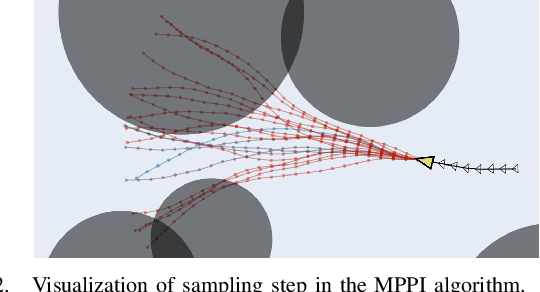
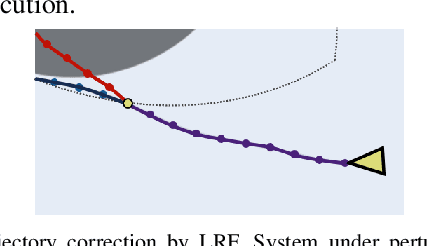
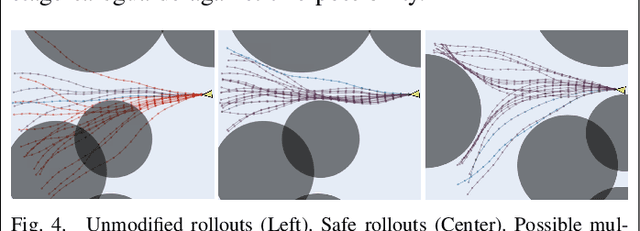
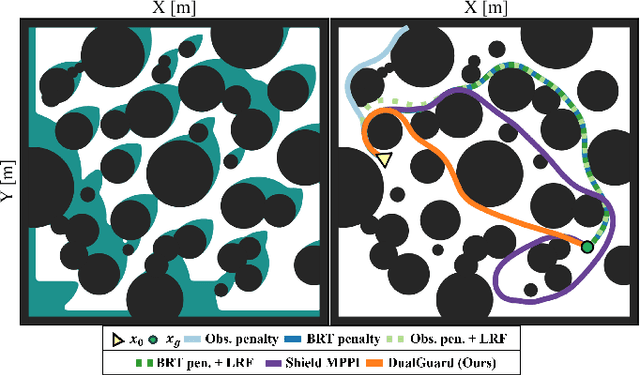
Abstract:Designing controllers that are both safe and performant is inherently challenging. This co-optimization can be formulated as a constrained optimal control problem, where the cost function represents the performance criterion and safety is specified as a constraint. While sampling-based methods, such as Model Predictive Path Integral (MPPI) control, have shown great promise in tackling complex optimal control problems, they often struggle to enforce safety constraints. To address this limitation, we propose DualGuard-MPPI, a novel framework for solving safety-constrained optimal control problems. Our approach integrates Hamilton-Jacobi reachability analysis within the MPPI sampling process to ensure that all generated samples are provably safe for the system. On the one hand, this integration allows DualGuard-MPPI to enforce strict safety constraints; at the same time, it facilitates a more effective exploration of the environment with the same number of samples, reducing the effective sampling variance and leading to better performance optimization. Through several simulations and hardware experiments, we demonstrate that the proposed approach achieves much higher performance compared to existing MPPI methods, without compromising safety.
One Filter to Deploy Them All: Robust Safety for Quadrupedal Navigation in Unknown Environments
Dec 13, 2024Abstract:As learning-based methods for legged robots rapidly grow in popularity, it is important that we can provide safety assurances efficiently across different controllers and environments. Existing works either rely on a priori knowledge of the environment and safety constraints to ensure system safety or provide assurances for a specific locomotion policy. To address these limitations, we propose an observation-conditioned reachability-based (OCR) safety-filter framework. Our key idea is to use an OCR value network (OCR-VN) that predicts the optimal control-theoretic safety value function for new failure regions and dynamic uncertainty during deployment time. Specifically, the OCR-VN facilitates rapid safety adaptation through two key components: a LiDAR-based input that allows the dynamic construction of safe regions in light of new obstacles and a disturbance estimation module that accounts for dynamics uncertainty in the wild. The predicted safety value function is used to construct an adaptive safety filter that overrides the nominal quadruped controller when necessary to maintain safety. Through simulation studies and hardware experiments on a Unitree Go1 quadruped, we demonstrate that the proposed framework can automatically safeguard a wide range of hierarchical quadruped controllers, adapts to novel environments, and is robust to unmodeled dynamics without a priori access to the controllers or environments - hence, "One Filter to Deploy Them All". The experiment videos can be found on the project website.
Enhancing Safety and Robustness of Vision-Based Controllers via Reachability Analysis
Oct 29, 2024
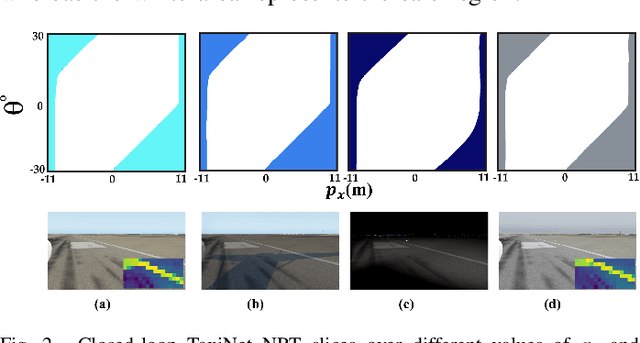

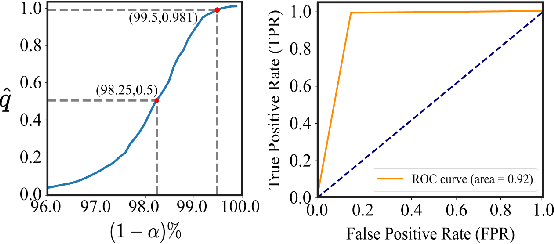
Abstract:Autonomous systems, such as self-driving cars and drones, have made significant strides in recent years by leveraging visual inputs and machine learning for decision-making and control. Despite their impressive performance, these vision-based controllers can make erroneous predictions when faced with novel or out-of-distribution inputs. Such errors can cascade into catastrophic system failures and compromise system safety. In this work, we compute Neural Reachable Tubes, which act as parameterized approximations of Backward Reachable Tubes to stress-test the vision-based controllers and mine their failure modes. The identified failures are then used to enhance the system safety through both offline and online methods. The online approach involves training a classifier as a run-time failure monitor to detect closed-loop, system-level failures, subsequently triggering a fallback controller that robustly handles these detected failures to preserve system safety. For the offline approach, we improve the original controller via incremental training using a carefully augmented failure dataset, resulting in a more robust controller that is resistant to the known failure modes. In either approach, the system is safeguarded against shortcomings that transcend the vision-based controller and pertain to the closed-loop safety of the overall system. We validate the proposed approaches on an autonomous aircraft taxiing task that involves using a vision-based controller to guide the aircraft towards the centerline of the runway. Our results show the efficacy of the proposed algorithms in identifying and handling system-level failures, outperforming methods that rely on controller prediction error or uncertainty quantification for identifying system failures.
System-Level Safety Monitoring and Recovery for Perception Failures in Autonomous Vehicles
Sep 26, 2024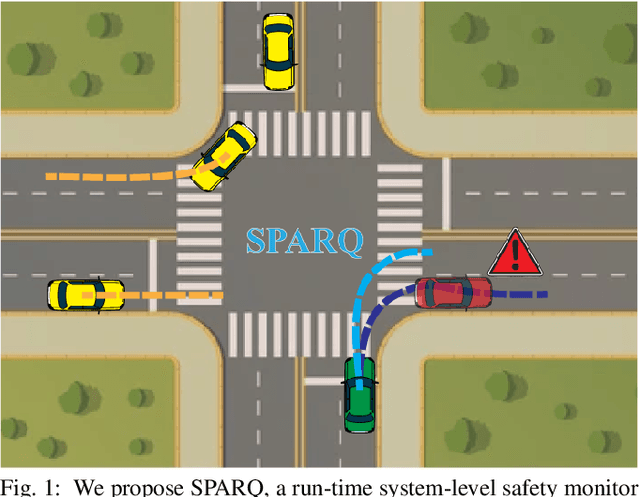

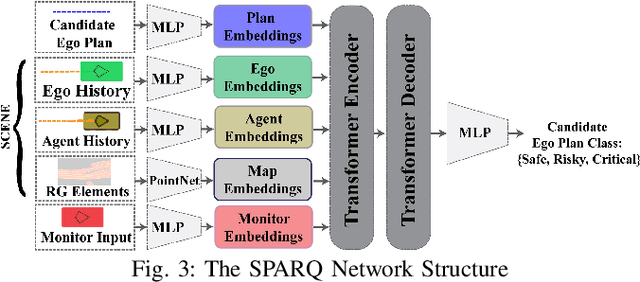
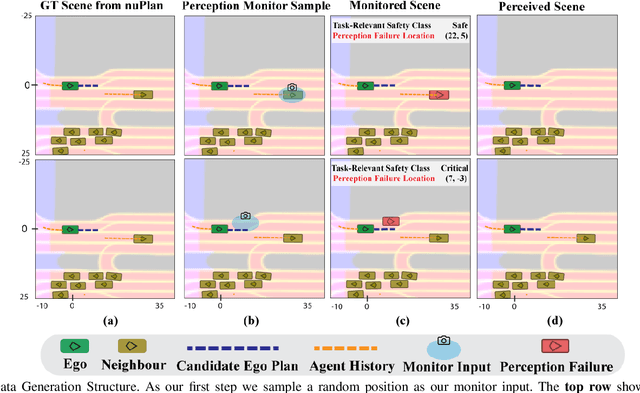
Abstract:The safety-critical nature of autonomous vehicle (AV) operation necessitates development of task-relevant algorithms that can reason about safety at the system level and not just at the component level. To reason about the impact of a perception failure on the entire system performance, such task-relevant algorithms must contend with various challenges: complexity of AV stacks, high uncertainty in the operating environments, and the need for real-time performance. To overcome these challenges, in this work, we introduce a Q-network called SPARQ (abbreviation for Safety evaluation for Perception And Recovery Q-network) that evaluates the safety of a plan generated by a planning algorithm, accounting for perception failures that the planning process may have overlooked. This Q-network can be queried during system runtime to assess whether a proposed plan is safe for execution or poses potential safety risks. If a violation is detected, the network can then recommend a corrective plan while accounting for the perceptual failure. We validate our algorithm using the NuPlan-Vegas dataset, demonstrating its ability to handle cases where a perception failure compromises a proposed plan while the corrective plan remains safe. We observe an overall accuracy and recall of 90% while sustaining a frequency of 42Hz on the unseen testing dataset. We compare our performance to a popular reachability-based baseline and analyze some interesting properties of our approach in improving the safety properties of an AV pipeline.
Updating Robot Safety Representations Online from Natural Language Feedback
Sep 22, 2024
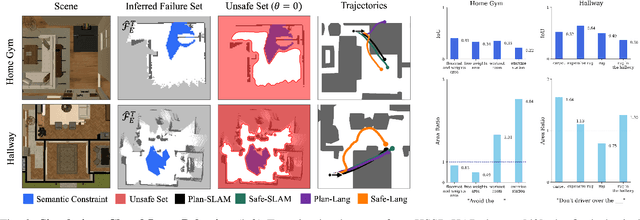
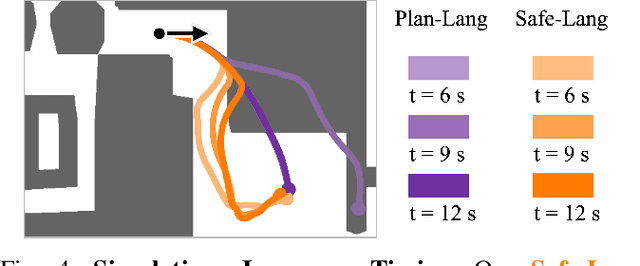
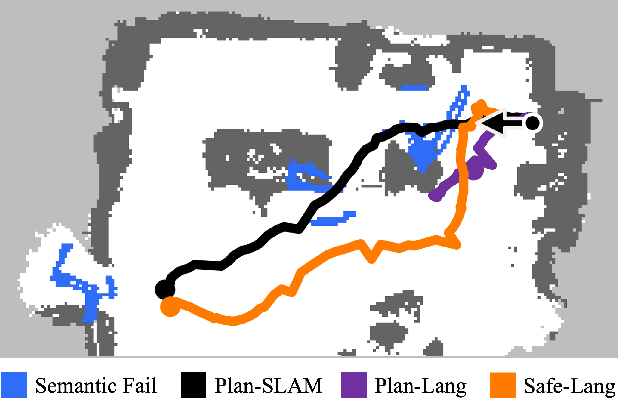
Abstract:Robots must operate safely when deployed in novel and human-centered environments, like homes. Current safe control approaches typically assume that the safety constraints are known a priori, and thus, the robot can pre-compute a corresponding safety controller. While this may make sense for some safety constraints (e.g., avoiding collision with walls by analyzing a floor plan), other constraints are more complex (e.g., spills), inherently personal, context-dependent, and can only be identified at deployment time when the robot is interacting in a specific environment and with a specific person (e.g., fragile objects, expensive rugs). Here, language provides a flexible mechanism to communicate these evolving safety constraints to the robot. In this work, we use vision language models (VLMs) to interpret language feedback and the robot's image observations to continuously update the robot's representation of safety constraints. With these inferred constraints, we update a Hamilton-Jacobi reachability safety controller online via efficient warm-starting techniques. Through simulation and hardware experiments, we demonstrate the robot's ability to infer and respect language-based safety constraints with the proposed approach.
 Add to Chrome
Add to Chrome Add to Firefox
Add to Firefox Add to Edge
Add to Edge